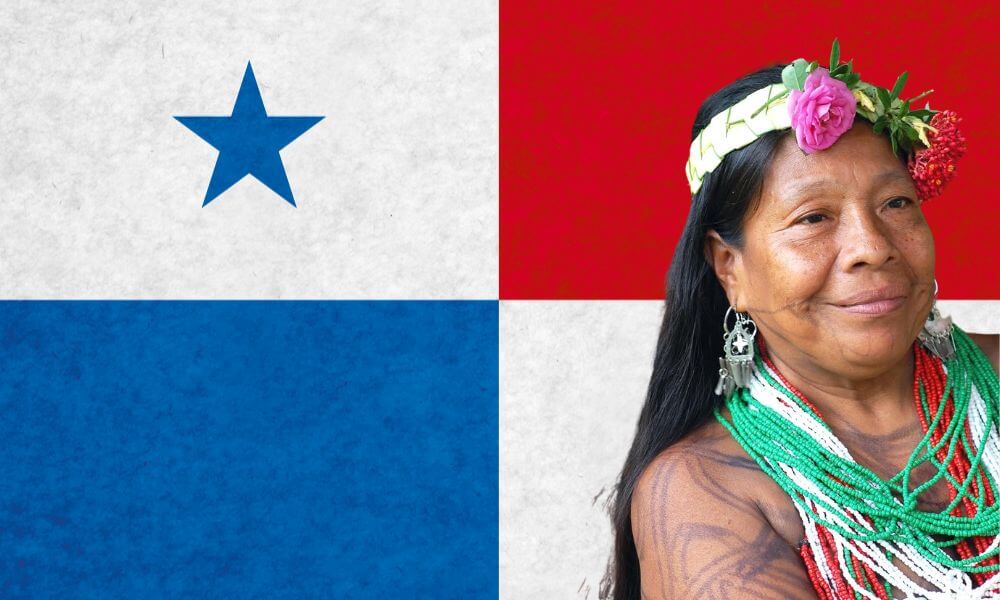Someone from Panama is called a Panamanian. The connection to the country may be ancestral, residential, legal or cultural. In terms of the standard demonym for a person with citizenship in Panama, the word is Panamanian. Equally, Panama comprises many diverse ethnic groups who may prefer to identify this way.
So, the short answer is that someone from Panama is called Panamanian.
This is the accepted and standard term for a person from Panama. But questions of nationality are rarely all that simple, and in reality if you were to take a sample of the population you may get a lot of very different answers about where they feel their identity lies.
Let’s find out more.

What is someone from Panama called?
Someone from Panama is called Panamanian.
This is the standard and widely used demonym for a person of Panamanian nationality or descent.
This, then, is the short and simple way of looking at it; through the lens of our modern sense of the nation state.
This, though, is a relatively recent thing, though it does tend to dominate the way we think about national and even cultural identity.
Panama as a nation in the modern sense has only existed since 1904.
We may, then, find out a lot more by looking at Panama’s ethnic makeup.
After all, there are many ways any given individual might be considered Panamanian.
Of course, if they were born there to native parents then they would be; but even if they were born elsewhere to Panamanian parents, or in Panama to non-native parents, then all of these things may lead someone to consider themselves Panamanian in a completely legitimate way.
Multiple ethnic groups comprise Panama’s population.
The majority of Panama’s population is what are called Mestizo people.
This is an ethnic group defined by historical admixture between native Americans and white colonizers and explorers.
The Mestizos represent around 65% of the population, You then have the Native American population, around 12% of the population.
Further minority groups then make up most of the rest of the population, with Black or African descent, Mulattos and White people.
There is also a considerable indigenous population in Panama, too.
The largest indigenous group is the Ngabe people, making up around 62% of the indigenous population; around 260,000 people.
Then there are, again, many minority ethnic groups, like the Buglé, the Guna, and the Emberá people.
The point in all this is that Panamanian identity is not always the most important part of someone’s identity if they are from Panama.
Most of these people may feel it more important to forefront their ethnic, rather than national, identity.
Where does the name “Panama” come from?
Unfortunately, the precise origin of the name Panama is not known for certain, and there are multiple competing theories to explain the name.
Among the most prominent of these theories is that the country was named after a species of tree commonly found in the nation, the Panama tree.
Another common suggestion is that the first settlers to the country arrived during the time of year when butterflies were abundant.
Thus, the word “Panama” is suggested to mean “many butterflies” in one or several of the languages of Panama’s indigenous people.
Still another theory posits the name is derived from the Castillianization of the word bannaba, a word in the Kuna language which means distant or far away.
A common legend is that there was a village in the now country named Panama, which meant “abundance of fish”, when Spanish explorers first arrived.
This story is corroborated by multiple diaries kept by Spanish colonizers from the time, and this is the story that is promoted by Panama and its Ministry of Education.
Unfortunately, though, we just don’t know for certain where the name comes from.
What language is spoken in Panama?
The official language of Panama is Spanish, and this is the first language of the vast majority of the population.
[adinserter block=”1″]
This is the language of all official proceedings, it’s the language spoken and taught in schools, and without doubt the only one you would really need to get by in the country.
On the other hand, there are of course lots of distinct indigenous groups in the country and most retain their own original language.
The preservation of these native tongues is of vital importance to the cultural identity of native peoples, and so many of them choose to use these languages among themselves.
Where do Panamanians live?
It’s always worth considering, with a question like this, the wider diaspora of people from the country who comprise the global population.
There are roughly 4.5 million Panamanians worldwide, around 4,2 million of which live in Panama itself.
The next largest population, rather unsurprisingly, can be found in the United States, where there are around 100,000 Panamanians living today.
Significant populations of Panamanians can also be found in Costa Rica, Spain, Colombia and Canada.
As you can see, then, Panamanian identity stretches far beyond the reaches of the country itself, and is still important to people who may never have even lived in the country itself.
Panama, then, is by no means an ethnic or cultural monolith.
There are many diverse groups living in the country, all of whom may consider both their Panamanian identity and their ethnic identity to be an important part of who they are.
Again, these questions are never quite as cut and dry as we might think.
More in Demonyms
- What Do You Call Someone From Afghanistan?
- What Do You Call Someone From Algeria?
- What Do You Call Someone From Argentina?
- What Do You Call Someone From Australia?
- What Do You Call Someone From Azerbaijan?
- What Do You Call Someone From Bangladesh?
- What Do You Call Someone From Barbados?
- What Do You Call Someone From Belgium?
- What Do You Call Someone From Botswana?
- What Do You Call Someone From Crete?
- What Do You Call Someone From Denmark?
- What Do You Call Someone From Ecuador?
- What Do You Call Someone From Egypt?
- What Do You Call Someone From El Salvador?
- What Do You Call Someone From Fiji?
- What Do You Call Someone From Finland?
- What Do You Call Someone From France?
- What Do You Call Someone From Ghana?
- What Do You Call Someone From Greece?
- What Do You Call Someone From Greenland?
- What Do You Call Someone From Hong Kong?
- What Do You Call Someone From Iceland?
- What Do You Call Someone From India?
- What Do You Call Someone From Ireland?
- What Do You Call Someone From Israel?
- What Do You Call Someone From Japan?
- What Do You Call Someone From Jersey?
- What Do You Call Someone From Jerusalem?
- What Do You Call Someone From Jordan?
- What Do You Call Someone From Kazakhstan?
- What Do You Call Someone From Laos?
- What Do You Call Someone From Malta?
- What Do You Call Someone From Myanmar?
- What Do You Call Someone From Niger?
- What Do You Call Someone From Pakistan?
- What Do You Call Someone From Panama?
- What Do You Call Someone From Peru?
- What Do You Call Someone From Rwanda?
- What Do You Call Someone From Singapore?
- What Do You Call Someone From Sri Lanka?
- What Do You Call Someone From Sweden?
- What Do You Call Someone From Switzerland?
- What Do You Call Someone From Thailand?
- What Do You Call Someone From The Isle of Wight?
- What Do You Call Someone From The Ivory Coast?
- What Do You Call Someone From The Netherlands?
- What Do You Call Someone From Uzbekistan?
- What Do You Call Someone From Vatican City?
- What Do You Call Someone From Wales?
- What Do You Call Someone From Zimbabwe?

